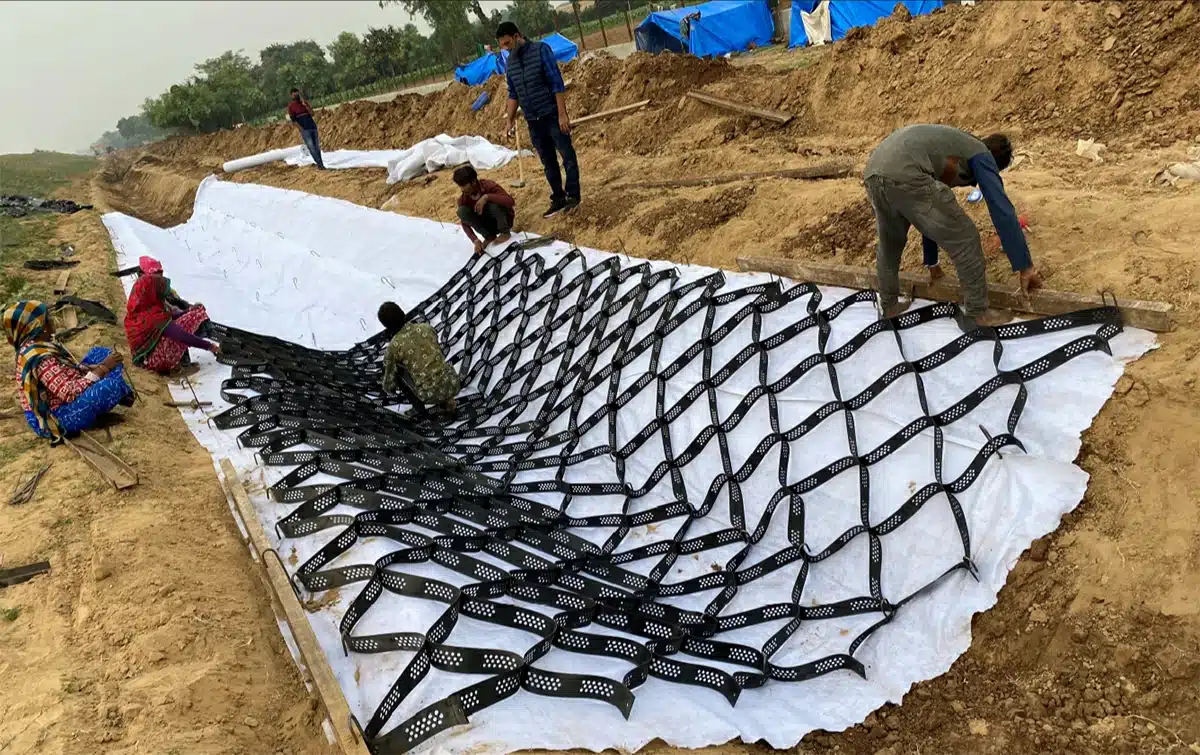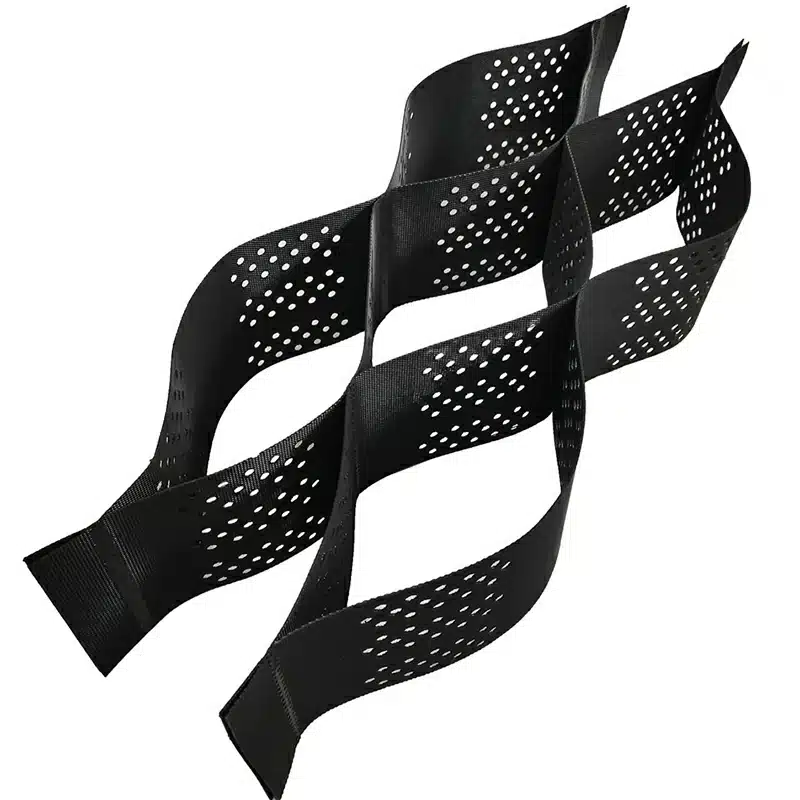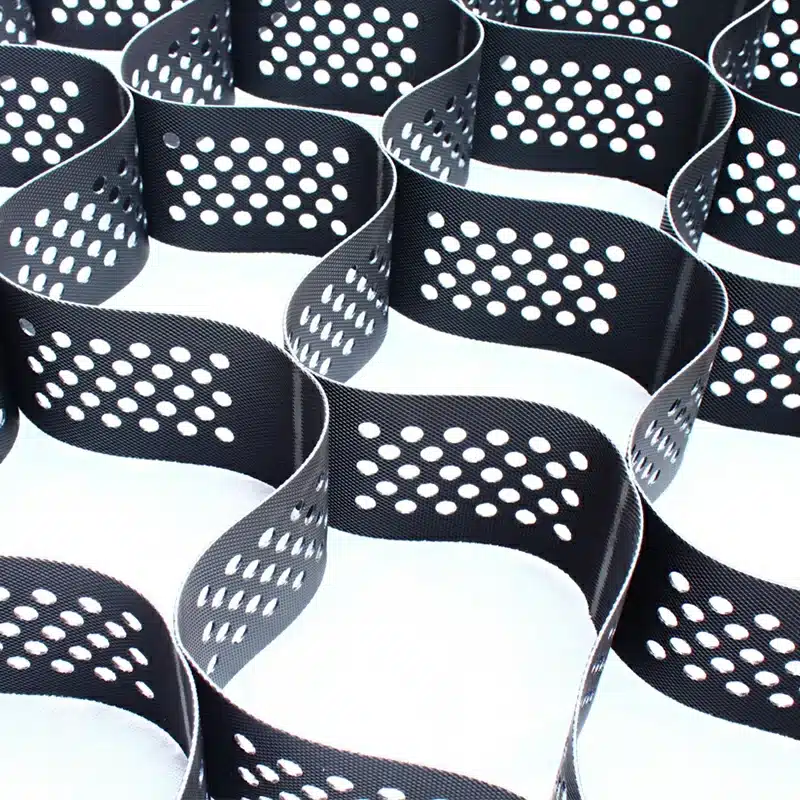+86-159 9860 6917
info@geofantex.com
geofantex@gmail.com
+86-400-8266163-44899
Retaining walls is crucial in engineering to prevent soil erosion, manage slopes, and support terrains. Among the various types of retaining walls, geocell retaining wall systems have emerged as a significant innovation. This article explores the concept of geocell retaining walls, their design principles, advantages, and typical applications. By integrating lightweight and flexible materials into complex geological settings, geocell retaining walls provide sustainable and cost-effective solutions for various engineering challenges.
What is a Geocell Retaining Wall?
A Geocell Retaining Wall is a structure that uses geocell technology to stabilize and reinforce soil, providing support for slopes, embankments, or retaining walls. Geocells are 3D, honeycomb-like, polymeric cells that are filled with materials like soil, gravel, or sand to enhance soil strength and prevent erosion. When used as a retaining wall, geocells:
- Contain materials within their cells, forming a strong, flexible barrier.
- Improve drainage by allowing water to pass through while maintaining structural integrity.
- Distribute loads evenly, preventing soil erosion and providing stability to steep slopes or retaining walls.
- Reduce the need for concrete or traditional stone materials, offering an eco-friendly and cost-effective alternative.
Geocell retaining walls are particularly useful in areas with weak soil or where traditional retaining walls may be difficult to construct. They provide long-lasting protection and can be integrated with vegetation, enhancing both structural and aesthetic value.

How are Geocell Retaining Walls Designed?
Designing a geocell retaining wall involves several key steps:
- Site Assessment: Evaluating soil characteristics, slope conditions, and load requirements.
- Material Selection: Choosing the appropriate geocell material that can withstand environmental and mechanical stresses.
- Geocell Layout: Determining the layout, height, and depth of the geocell layers to ensure stability.
- Filling Material: Selecting the right type of fill material, which can be soil, sand, or gravel, depending on the specific requirements of the site.
- Drainage Considerations: Integrating efficient drainage solutions to prevent water accumulation and pressure buildup behind the wall.
- Construction Techniques: Implementing proper installation methods to ensure the longevity and effectiveness of the retaining wall.
What are the Advantages of Using Geocell Retaining Walls?
Geocell retaining walls are a cost-effective, sustainable, and flexible solution in civil engineering and landscaping. These three-dimensional structures are used to stabilize soil, prevent erosion, and support slopes.
- Cost-effective: Cheaper than traditional systems like concrete, reducing material and labor costs.
- Environmentally sustainable: Reduces the need for resource-heavy materials and integrates with natural landscapes.
- Easy to install: Lightweight and adaptable, suitable for various terrains and quick deployment.
- Soil stabilization: The honeycomb design prevents soil erosion and improves slope strength.
Overall, geocell retaining walls offer an efficient, environmentally friendly alternative to traditional retaining systems.

What Are Typical Applications of Geocell Retaining Walls?
Geocell retaining walls are commonly used in:
- Slope Stabilization: To prevent soil erosion and stabilize slopes.
- Erosion Control: Protects against water runoff and erosion in areas like riverbanks and coastlines.
- Load Support: Used to support heavy loads, like roads or parking lots, on weak soils.
- Flood Management: Helps control water flow in flood-prone areas by reinforcing soil.
- Terracing: Ideal for creating terraces on hilly terrain to reduce water runoff.
Geocell systems provide effective, cost-efficient solutions for stabilizing and protecting soil in various environments.
Geocell retaining walls represent a significant advancement in civil engineering, offering a flexible, durable, and cost-effective solution for soil stabilization and erosion control. Their design allows for adaptation to varied terrains and conditions, making them suitable for a wide range of applications. By understanding and implementing geocell technology, engineers can effectively tackle challenging geological issues, promoting safety and sustainability in infrastructure development.



Get Free Sample
We’ll respond as soon as possible(within 12 hours)





















